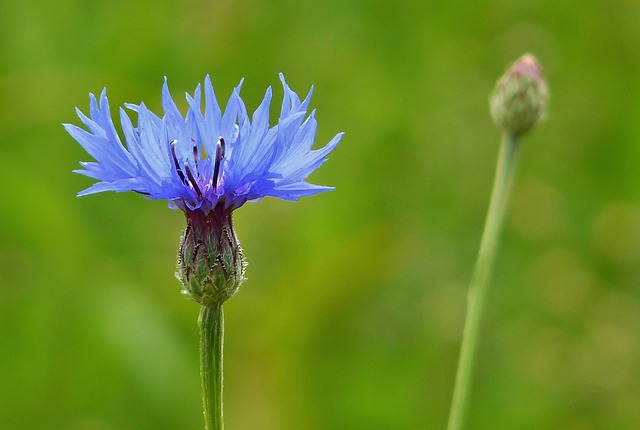 |  |  |  |  |
 |  |  |
The blue cornflower is a perennial plant, with a thin taproot, from which the roots reach out in all directions. The stem is erect, branched, up to 80 cm tall. The lower leaves are trilobed or tufted, rarely whole, on petioles, dying during flowering. The other leaves are sessile, linear, entire. Flowers, single, in large inflorescences, in baskets with a diameter of up to 3 cm, which are located at the ends of long, leafless peduncles. The outer flowers are infertile, the middle bisexual flowers are violet-blue. Fruits - hairy, shiny, gray or yellow-gray, elongated ovoid seeds, 2.5-4mm long. The plant blooms from May to August. Plants ripen in August.
For medicinal purposes, marginal flowers without baskets are used. They are collected during flowering in June-July, as soon as the baskets bloom. Side flowers are plucked from flower baskets. Dry immediately after collection, in a shady and well-ventilated place on fine fabric screens, or in forced dryers not exceeding 40-50C temperature, periodically stirring the mass to be dried. Under the influence of sunlight, the outer flowers turn from blue, turn pale and lose all their valuable properties. Dried cornflower drug is odorless, has a distinctive blue color and a bitter astringent taste. The permissible moisture content of the drug is 14%. The drug is stored in closed boxes or glass containers for no longer than 2 years.
The main active substances are anthocyanins, diglycosides cyanidin and pelargonidin, as well as phenol and flavone derivatives - apigenin, luteolin, quercetin and kaempferol. The outer flowers of the blue cornflower contain the glycoside centaurin. Pelargonin chloride, anthocyanins, coumarins, saponins, sterols, resins, pectins and tannins, carotene and ascorbic acid are also found in the flowers. As well as potassium, calcium, iron, magnesium salts and trace elements: manganese, copper, zinc, cobalt, chromium, nickel, vanadium, aluminum, selenium, lead, strontium and boron. Blue cornflower seeds contain <28% vegetable oil.
Ārstnieciskā nozīme
Zilās rudzupuķes preparāti rada urīna dzenošu, sviedru
dzenošu, temperatūras mazinošu, žulti dzenošu, pretiekaisuma, antimikrobu,
vieglu caurejas, pret drudža, atsāpinošu, brūču dziedējošu iedarbību. Tie
atbrīvo no iekšējo orgānu gludās muskulatūras spazmām, stimulē apetīti un
uzlabo gremošanu.
Zilo rudzupuķi lieto iekšķīgi saaukstēšanās, klepus, nieru
un sirds izcelsmes tūsku, urīnpūšļa iekaisumu ārstēšanai. Tās preparāti uzlabo
gremošanas procesus, palīdz aizcietējumu, vēdersāpju gadījumā.
Zilo rudzupuķi izmanto aplikācijām, acu slimību gadījumā: hemeralopija,
konjunktivīts, blefarīts, vājredzība. Zilā rudzupuķe ir noderīga dzeltenās
kaites, kolītu, podagras, skorbuta un cērmju invāzijas gadījumā.
Vīriešiem
Maisījumos rudzupuķi izmanto, lai stimulētu CNS un ārstētu prostatas adenomu, prostatītu, prostatas adenomas radītu atoniju, dizūriju un cistītu ar urīna aizturi.
